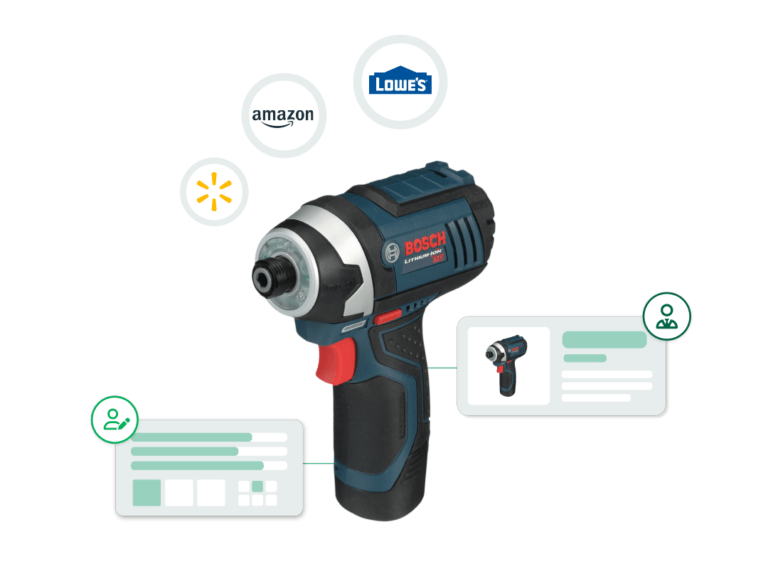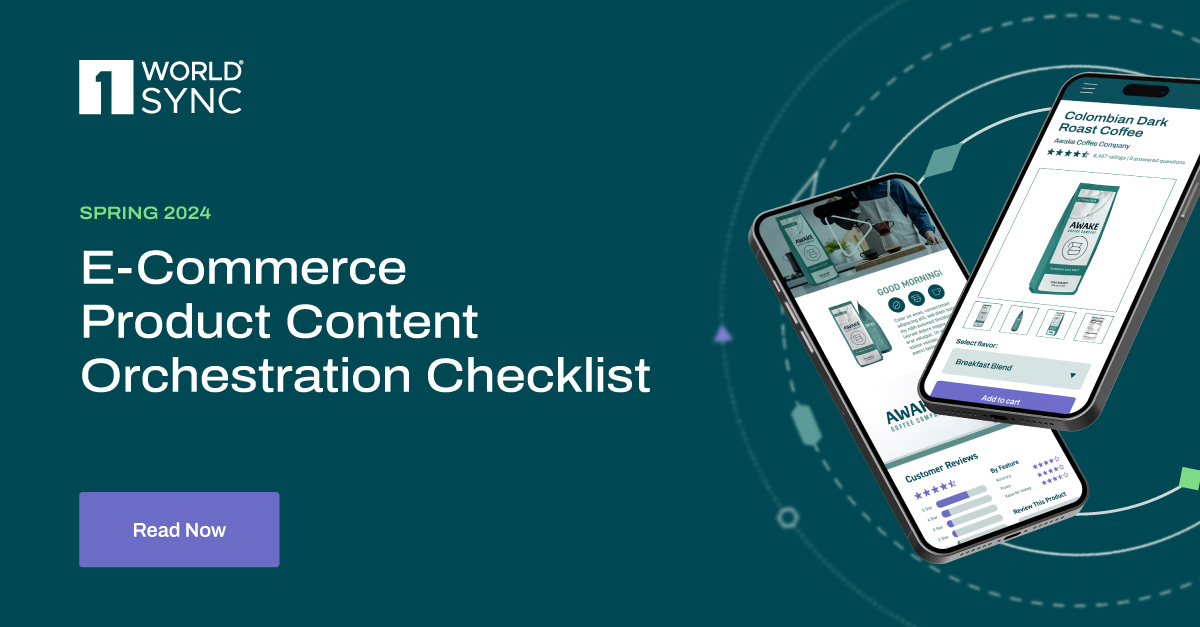Selling products online requires brands to publish accurate, consistent, and up-to-date product content validated according to various retailer standards. Effective data management is only possible with a Product Information Management (PIM) tool.
When choosing a PIM system for your business, you want to ensure the solution is the right fit for your unique needs. This article explores six essential questions to ask before buying a PIM tool.
Why You Need a PIM System
PIM systems allow brands to maintain data and content and position themselves to win the digital shelf. In today’s ever-expanding e-commerce market, an effective PIM system is a must-have.
PIM solutions allow businesses to
- Streamline data entry
- Offer real-time data tracking
- House a single source of data truth
- Scale according to growth
- Standardized product data and content
Understand that PIM systems vary in their abilities, user-friendliness, and customer support options. When you choose a PIM –– and PIM provider –– you want to ensure your needs are not only met but are anticipated and planned for.
What to Ask Before Investing in a PIM Solution
Before you invest in a PIM solution for your business, there are a few questions you need to ask. We’ve listed the most important ones below.
1. Is the PIM Solution Flexible and User-Friendly?
Many team members will utilize your PIM tools to manage data. Your chosen system must enable agile data governance, delivering a seamless experience for every user.
A flexible, intuitive PIM allows your team to use their time efficiently. Instead of wasting hours on manual data entry and edits, your PIM accomplishes the same tasks in a fraction of the time. The system you choose should make input and editing easy and accessible for your team. It should ensure complete, accurate, quality product data wherever you sell your products.
Your PIM tool empowers your team to operate from a single source of truth. When each user can add and edit data as needed, universal changes occur in real-time, eliminating manual entry errors and delivering a better customer experience.
2. Can the PIM Solution Meet the Requirements of Target Systems?
Selling across multiple retailers and channels is the norm for e-commerce businesses. The more partners you deal with, the more standards and regulations your data must comply with. When exploring PIM options, choose a solution that can meet your target systems’ requirements.
Firstly, your PIM tool should make it easy to ensure you’re complying with GS1 standards. Doing so will simplify the exchange of your product data, increasing data accuracy and operational efficiency.
Your PIM solution should also provide effortless data validation with your trading partners. Quality data management is essential for acquiring and maintaining retail partner relationships. Through a proven PIM system, you can meet retailer data standards, streamlining operations and providing a seamless experience for all parties.
Digital asset management directly affects your relationship with trading partners, the customer experience, and day-to-day workflows. As you evaluate potential PIM systems for your business, you want a solution that can meet the requirements of your target systems, your team, and the consumer.
3. Does the System Alert You to Missing Information?
PIM systems are essential for effective and fast content disbursement. But the most advanced systems alert teams when content is missing information or specific retailer criteria. Your teams have enough responsibility without manually managing content quality and accuracy.
The PIM tool you choose should notify you of compliance issues and missing details pertinent to your content. When your team receives those alerts, your PIM solution enables instant, universal edits that take place in real-time. You don’t have to worry about missing content updates because your PIM system ensures that all data is accurate and simultaneously updated when needed.
4. How Does the System Optimize Content?
Your content serves myriad purposes, a few of which include
- Boosting SEO (search engine optimization) performance and increasing rankings, visibility, and traffic
- Engaging shoppers
- Informing consumers and inspiring trust
- Persuading shoppers to purchase your products
Notice that all points above lead back to one central focus: delivering an exceptional customer experience that leads to conversions. Optimized content is a crucial component of your marketing and sales efforts. A high-performing PIM system should aid in your effort to optimize your content.
Online shoppers are savvy, and they can easily spot low-quality, repetitive, inaccurate, and inconsistent content. Omnichannel sales require brands to ensure content optimization as their shoppers interact with their brand across multiple channels, platforms and retailers.
When content is lacking, the customer has a poor experience that informs brand perception. But when you implement data-driven content optimization through your PIM system, you increase customer satisfaction –– and sales.
5. What Kind of Reporting Does the PIM System Offer?
Creating product content is just one step of your content management process. Publishing that content is another. But without data reporting, you cannot know the success or efficacy of that content.
Advanced PIM systems offer data analytics and reporting that allows you to understand what’s working and what isn’t. Data shows past content performance and can predict the content that will help you hit your KPIs. Data empowers you to take actionable steps to secure your position on the digital shelf.
PIM solutions can aid in keyword identification, anticipate product experience successes, and increase your visibility, helping the right audience find your products. As you consider PIM options, ask your provider what reporting they offer. Their answer will inform you if their system is right for your business.
6. How Can the PIM System Adapt to Future Needs?
Your business isn’t the same today as it was two years ago. And it won’t be the same two years from now, either. As your needs and goals evolve, your PIM system must adapt to suit you.
As you expand, you’ll have a growing amount of product data to organize, validate, and aggregate. You’ll also likely increase the number of your trading partner relationships. Manually managing this content volume is not only a waste of resources, but the probability of human error increases with each item or partner you add. Investing in a PIM significantly reduces –- and in some cases eliminates –– data errors that negatively affect your sales.
Once you commit to a PIM solution and integrate it into your workflows, you won’t want to switch once your business outgrows the system. And if you choose a scalable and adaptable PIM solution, you won’t have to.
Before investing in a PIM solution, ensure it can grow alongside your business and deliver the services and insights you need to succeed in the e-commerce space.
PIM Solutions from 1WorldSync
If you want to succeed in this e-commerce landscape, you need a PIM system that can keep up. 1WorldSync delivers PIM solutions that cover all the bases. Our systems and support ensure you have access to the tools you need to compete –– and win –– in the digital retail space.
Reach out to our team to learn how 1WorldSync’s PIM solutions empower you to grow your business starting now.





